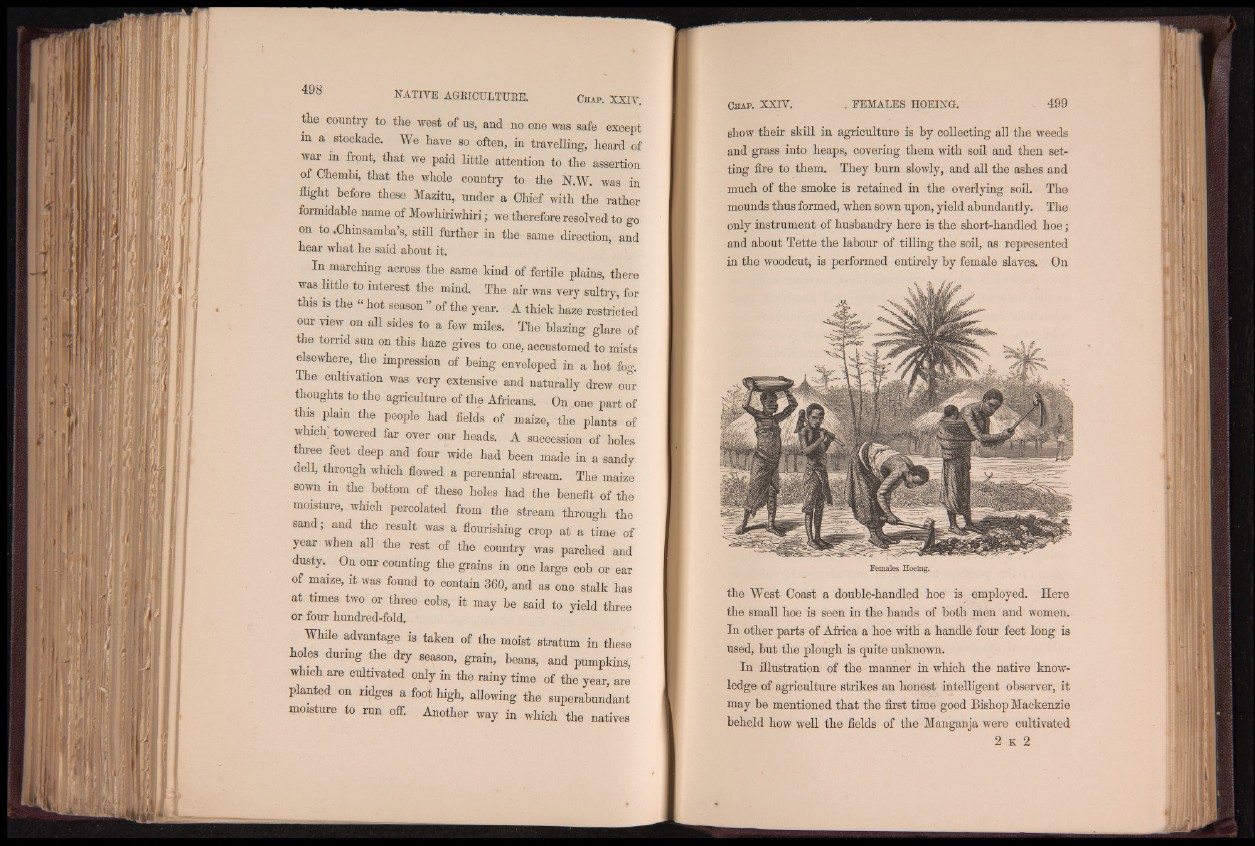
the country to the west of us, and no one was safe except
in a stockade. We have so often, in travelling, heard of
war in frpnt, that we paid little attention to the assertion
of Chembi, that the whole country to the N.W. was in
flight before these Mazitu, under a Chief with the rather
formidable name of Mowhiriwhiri; we therefore resolved to go
on to .Chinsamba’s, still further in the same direction, and
hear what he said about it.
In marching across the same kind of fertile plains, there
was little to interest the mind. The air was very sultry, for
this is the “ hot season ” of the year. A thick haze restricted
our view on all sides to a few miles. The blazing glare of
the torrid sun on this haze gives to one, accustomed to mists
elsewhere, the impression of being enveloped in a hot fog.
The cultivation was very extensive and naturally drew our
thoughts to the agriculture of the Africans. On „one part of
this plain the people had fields of maize, the plants of
which, towered far over our heads. A succession of holes
three feet deep and four wide had been made in a sandy
dell, through which flowed a perennial stream. The maize
sown in the bottom of these holes had the benefit of the
moisture, which percolated from the stream through the
sand; and the result was a flourishing crop at a time of
year when all the rest of the country was parched and
dusty. On our counting the grains in one large cob or ear
of maize, it was found to contain 360, and as one stalk has
at times two or three cobs, it may be said to yield three
or four hundred-fold.
While advantage is taken of the moist stratum in these
holes dunng the dry season, grain, beans, and pumpkins,
which are cultivated only in the rainy time of the year, are
planted on ridges a foot high, allowing the superabundant
moisture to run off. Another way in which the natives
show their skill in agriculture is by collecting all the weeds
and grass into heaps, covering them with soil and then setting
fire to them. They bum slowly, and all the ashes and
much of the smoke is retained in the overlying soiL The
mounds thus formed, when sown upon, yield abundantly. The
only instrument of husbandry here is the short-handled hoe ;
and about Tette the labour of tilling the soil, as represented
in the woodcut, is performed entirely by female slaves. On
Females Hoeing.
the West Coast a double-handled hoe is employed. Here
the small hoe is seen in the hands of both men and women.
In other parts of Africa a hoe with a handle four feet long is
used, but the plough is quite unknown.
In illustration of the manner in which the native knowledge
of agriculture strikes an honest intelligent observer, it
may be mentioned that the first time good Bishop Mackenzie
beheld how well the fields of the Manganja were cultivated
2 k 2